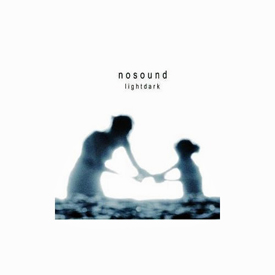Nosound – “Lightdark”

Lightdark is the second full studio album from Italian progressive rock quintet Nosound. Progressive? Definitely! But the term “rock” can only be applied loosely. Nosound relies on languid tempos with traditional rock instruments employed for mere decoration. Each of the seven pieces relies primarily on slow synthesizer patterns and sparse piano phrases from prime mover Giancarlo Erra and keyboardist Paolo Martellacci. Use of bass, drums, guitars, and even solos is spare.
Nosound is heavily influenced by dream rock veterans No-Man (whose vocalist Tim Bowness guests on “Someone Starts To Fade Away”) and early to mid-70s Pink Floyd. Think of a murky version of the lengthy instrumental sections on Wish You Were Here sans any lead instrument or a darker “All Sweet Things” from No-Man, and you’ll get the picture. Cello parts, courtesy of Marianne de Chastelaine, are as important as Gabrielle Savini’s acoustic guitars or bottom end from bassist Alessandro Luci. We hear more solid drum patterns from Gigi Zito or Erra’s guitar mostly as punctuation before a song fades away. English lyrics from Erra are sung with his mild, Italian accent and are submerged well below the keyboards and strings. There is nothing here that will grab you and shake you. Lightdark offers little for the casual ear, yet reveals its charms to those who commit to active listening.
The three shortest cuts, the instrumental “About Butterflies And Children,” “Pieces Remained” and “The Misplay” are front-loaded as build up for the centerpiece, “From Silence to Noise.” Over the course of 15 minutes, Erra and crew assemble an emotional backdrop that forms behind Erra’s eventual lead guitar. The strongest moments exist within the final three cuts, “Someone Starts To Fade Away,” “Kites” and the title track. At nearly nine minutes each, the length feels perfect for Nosound’s method of aural sculpture and quiet disappearance.
Nosound has already begun work on their third album, due later in 2009. With neo-prog label Kscope/Snapper backing them, we can expect to hear more of the group’s inventive post-rock ambience in the very near future. Already gaining popularity in Europe, we can also expect to hear more collaborations with like-minded creators such as Bowness and greater exposure to an American audience lacking in fare this beautiful.
-Mark Polzin
